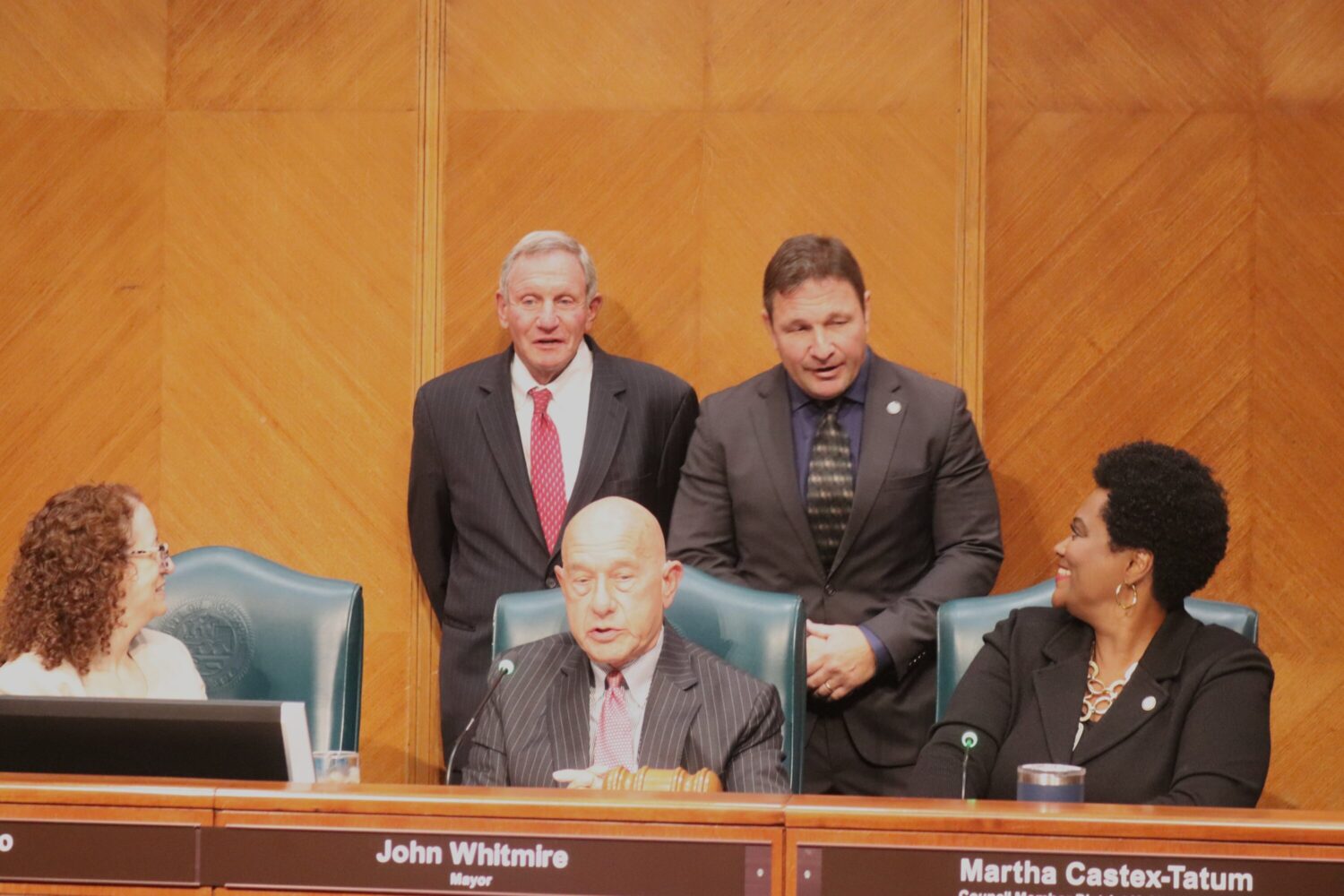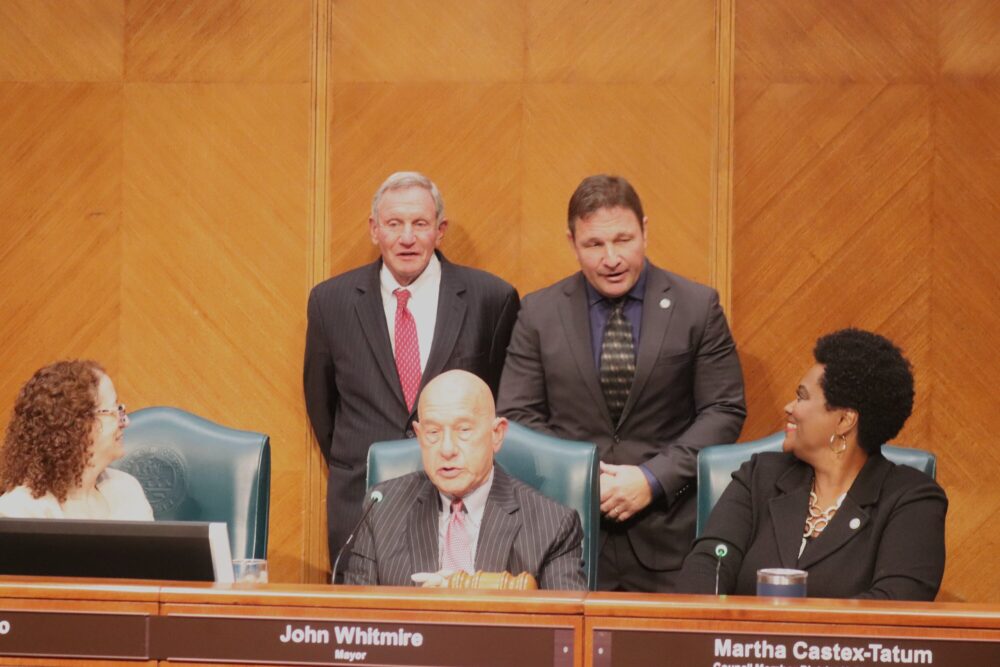Dominic Anthony Walsh/Houston Public Media
Houston’s housing director Mike Nichols, back left, and public safety director Larry Satterwhite, back right, stand behind Mayor John Whitmire during a Houston City Council meeting Wednesday, Oct. 29, 2025.
In a critical step toward Mayor John Whitmire’s effort to functionally eliminate street homelessness, the Houston City Council approved the $16 million purchase of a facility in East Downtown that could temporarily shelter hundreds of homeless people at a time.
Whitmire described the move as “just the first step,” with plans for additional service facilities across the city.
“We’re looking at other locations — superb opportunities — to really remove the homeless from the streets of Houston,” Whitmire said. “It’s a complex issue. … We don’t remove someone if we don’t know where we’re going to place them.”
The 14-1 vote came after two weeks of delays and intense backlash from some community members in the area.
Whitmire’s administration unveiled the planned facility earlier in October, catching residents off-guard. Officials said the facility would temporarily shelter up to 320 people at a time, providing services before referring them to other programs and housing. It’s been pitched as a low-barrier facility serving the most vulnerable with capacity to move more than 1,000 homeless people through the pipeline to permanent housing each year.
According to the annual count by the Coalition for the Homeless and its partners, in January about 1,800 of the 3,000 homeless people in Harris County lived in shelters. Without enough beds in the shelter system, another 1,200 slept on the streets.
Residents in the area have raised concerns about public safety, quality of life and a lack of community engagement.
During the city council’s public comment session on Tuesday, Second Ward resident Karin Knapp called for a further delay.
RELATED: Proposed homeless center in East Downtown faces community pushback ahead of key vote
“Homeless people are human beings and deserve to live a life — a safe and healthy life. I believe you thought through how this shelter directs them to the resources they need,” Knapp said. “However, I’ve only heard vague assurances to address legitimate resident concerns. This facility will be more than a model for how to help homeless people. It will be the model for how to integrate shelters into our neighborhoods, and your rollout shows that you didn’t think that through.”
In an effort to address public safety concerns, Whitmire said the Houston Police Department will relocate and expand the department’s Homeless Outreach Team to the facility and increase patrols in the area.
The administration also intends to expand the city’s so-called civility ordinance — intended to prohibit the loitering of homeless people on sidewalks. It’s already in effect in East Downtown, but the zone ends a few yards to the east of the facility.
Sarah Grunau/Houston Public Media
Pictured is the inside of a proposed resource center for homeless people in Houston, located at 419 Emancipation Ave.
Council member Mario Castillo — who represents nearby residential neighborhoods in the Second Ward — previously delayed the purchase to allow for more engagement.
He hosted a contentious community meeting last week in which most attendees spoke out against the proposal. On Wednesday, Castillo said he supported many of their suggestions, like expanding the civility ordinance, slowly ramping up the capacity of the facility, locating the facility entrance in the rear to avoid a visible line and establishing a community task force.
“The concerns are legitimate, and there is a lot of fear,” Castillo said, “but I think these things go a long way in addressing that and reassuring the neighborhood that the city is committed to a project that will work, and these things help make sure that any of the unintended consequences aren’t placed on the burden of one neighborhood, one area.”
Council member Edward Pollard was the sole vote against the purchase. He outlined a number of concerns, including the difference between the low end of two appraisals — which came in at $10 million and $20 million — compared to the $16 million price tag.
“I agree we do need to do something, but just because we need to do something doesn’t mean that we need to just do anything,” Pollard said, adding his skepticism that the facility would reduce visible homelessness across the entire city.
He also questioned the financial sustainability of the project.
The long-term funding for the facility has not been fully specified. The $16 million purchase comes as debt paid over the next 10 years. One-time funding from the federal government for recovery from last year’s derecho wind event and Hurricane Beryl will fund the bulk of the first three years of operations, estimated to run between $10 million and $14 million annually. Beyond that horizon, the administration has pointed to a variety of potential funding sources — including private philanthropy and the city’s general fund.
With the purchase approved, the city’s housing department intends to open the facility to homeless people in early 2026. According to the administration, by the end of next year the city and its partners will functionally end street homelessness in Houston — which officials define as housing everyone within 90 days of them becoming homeless.



